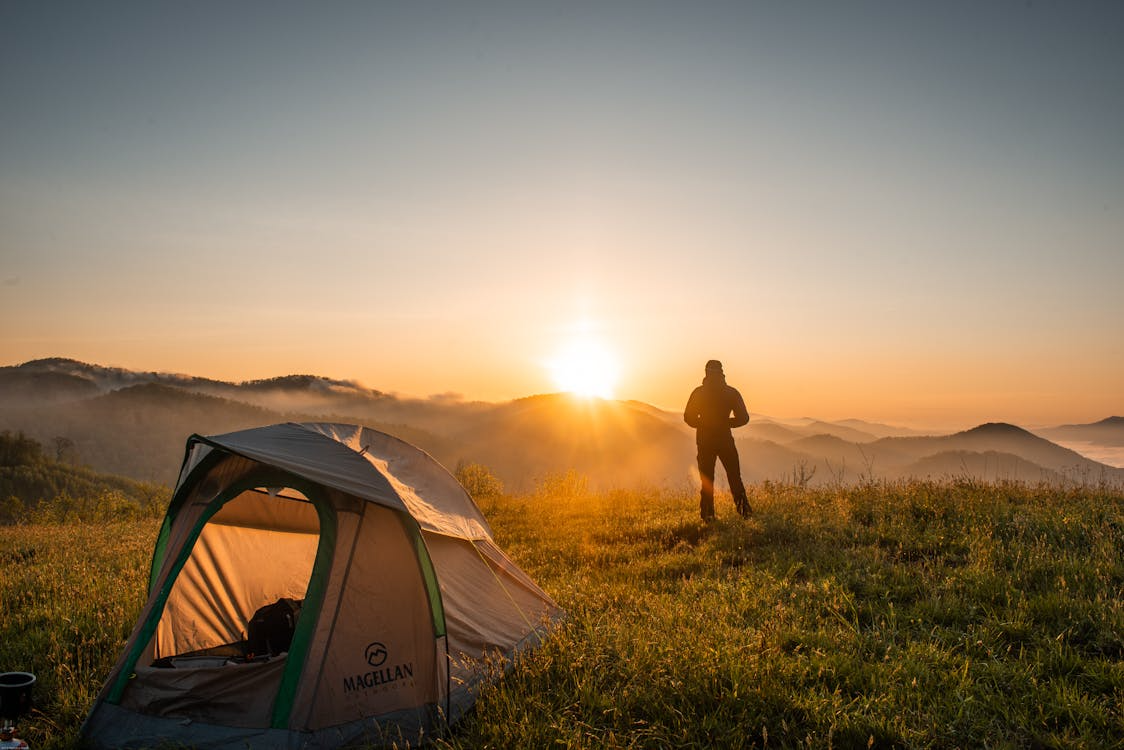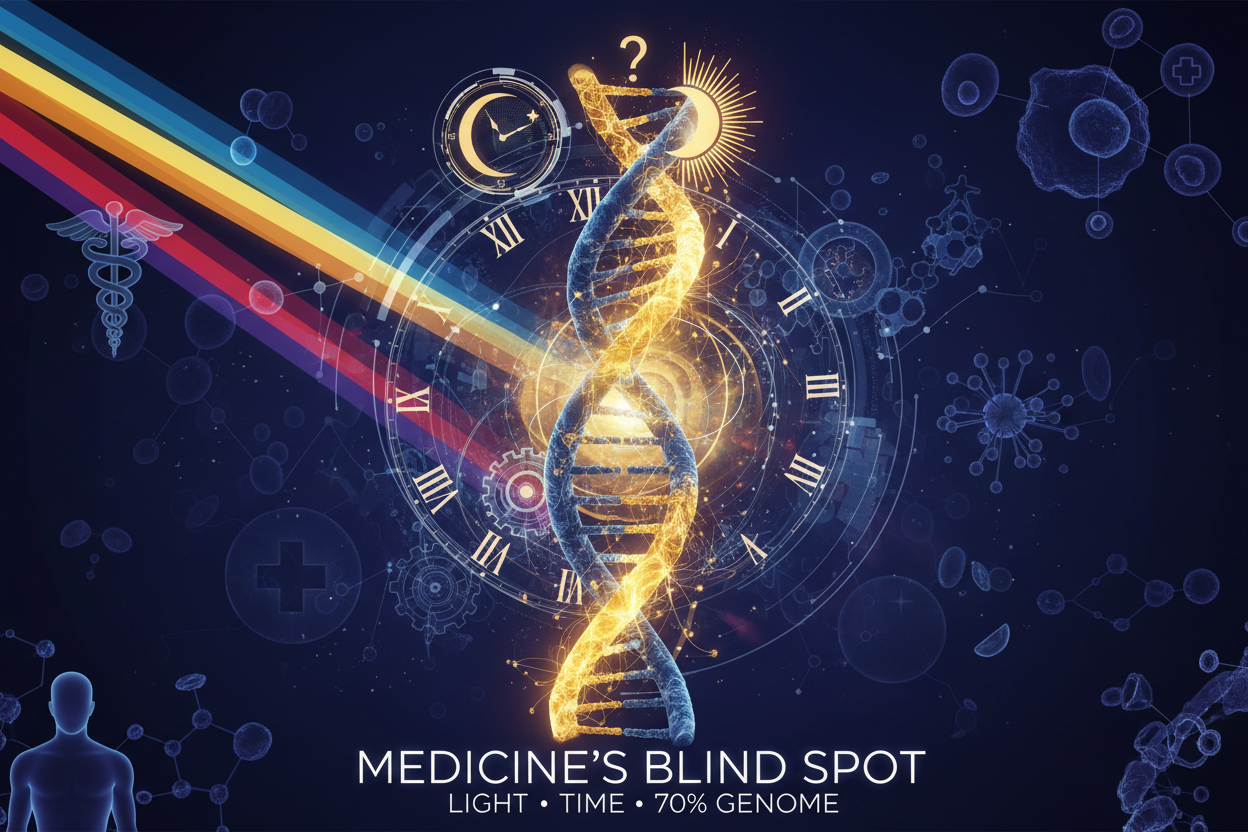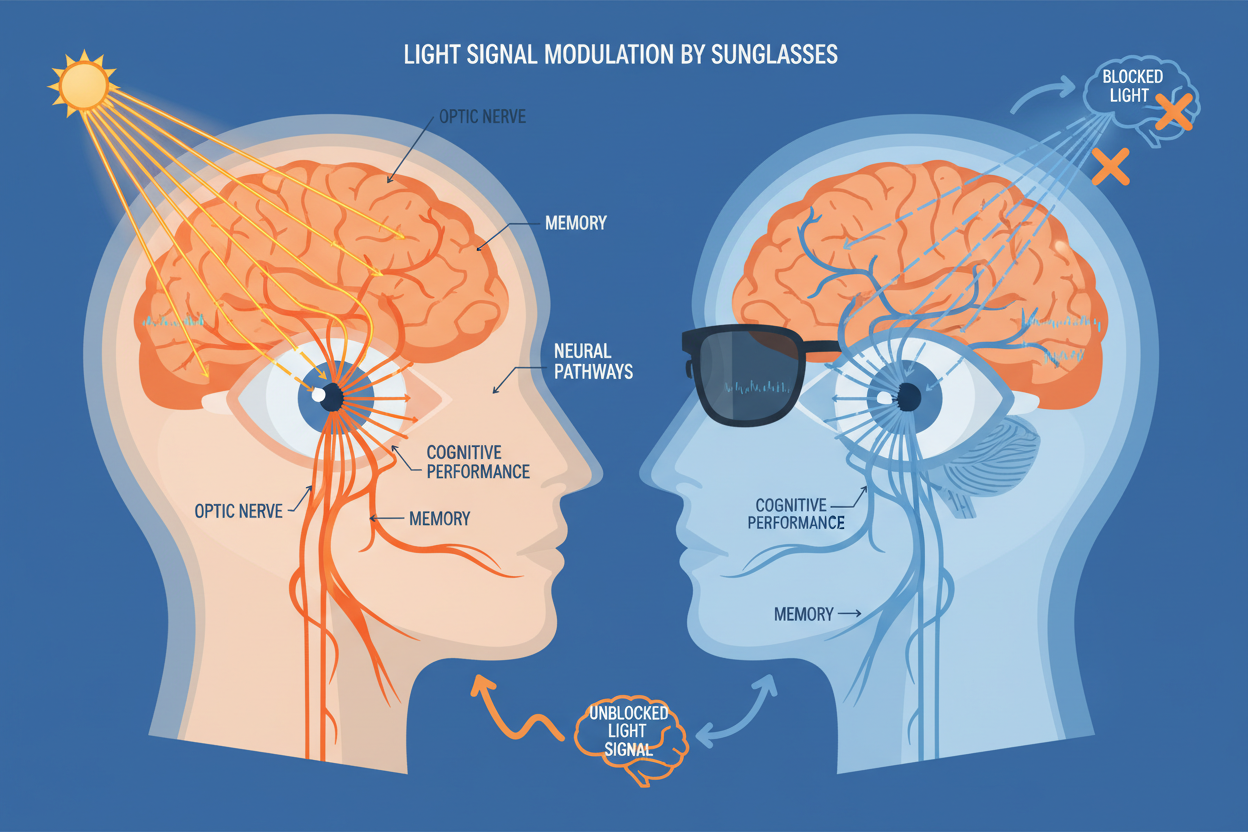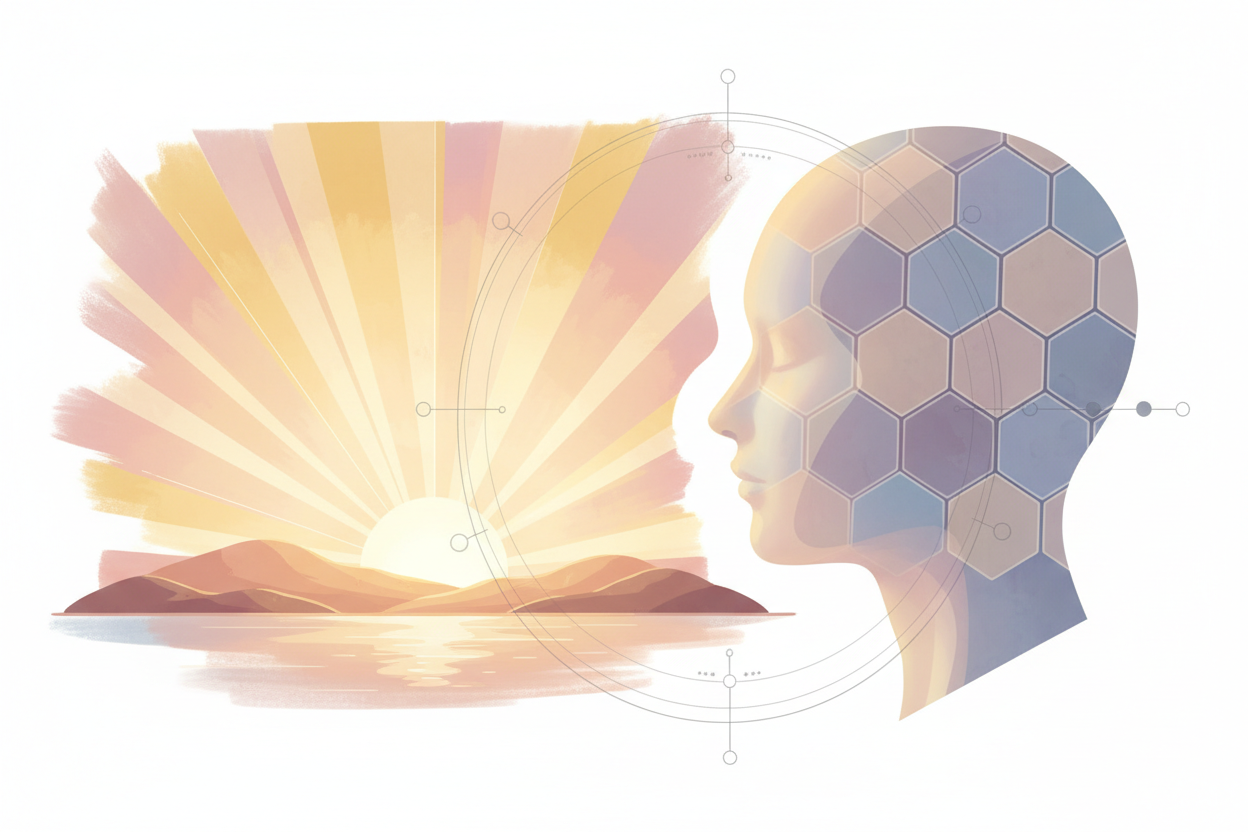
Your sleep is broken because you forgot about physics
It's 7:17 in the morning. The sun has been in the sky for more than two hours, and you're probably just now crawling out of bed, reaching for your phone, and pouring your first dose of caffeine into yourself just to pretend you're alive. You tossed and turned all night, your brain was running at full speed, and now you feel like you've been run over by a steamroller.
And what do you do? You start googling "best mattresses," buy expensive memory foam pillows, drink chamomile teas, and watch "sleep hacks" from some biohackers in red glasses who tell you to tape your mouth shut.
You treat the symptoms but ignore the cause.
Your sleep is not a psychological problem. It is neuroendocrine and biophysical process controlled by light. Period.
Science you were supposed to remember from school
Inside your brain sits the suprachiasmatic nucleus (SCN). It's not just some "internal alarm clock." It's your master conductor orchestrating the symphony of hundreds of hormones and neurotransmitters that decide whether you are full of energy or a tired wreck.
This conductor needs to get the sheet music every morning. He needs calibration. He needs a signal that the day has started.
When the first morning photons – yes, PHOTONS, particles of light – hit the retina of your eye, they trigger a cascade that no dietary supplement or pillow in the world can match:
CORTISOL SURGE: A healthy morning peak of cortisol wakes you up and kickstarts your metabolism. It is not stress; it is a natural activation.
DOPAMINE SYNCHRONIZATION: Light on the retina stimulates dopamine production for motivation and concentration.
MELATONIN SHUTDOWN: Morning light immediately and brutally suppresses the production of the sleep hormone.
By "turning off" melatonin in the morning, you set an unrelenting 14-16 hour timer for its evening return. Evening drowsiness is no coincidence. It is a direct consequence of morning light exposure.
Data you should have been interested in earlier
A study by Anderson and Ostermiller from the University of Southern Mississippi tracked 103 adults over a period of 70 days. They used diaries and the Pittsburgh Sleep Quality Index – the gold standard for measuring sleep quality. Their findings are devastating:
Morning light predicted better sleep: People who were exposed to the morning sun had better sleep quality that night. Not during the day, not in the evening – in the morning.
Faster falling asleep: Those with morning sun exposure fell asleep faster.
Less waking up: They slept more peacefully all night with fewer interruptions.
Higher sleep efficiency: More time spent in bed was actually devoted to sleep, not tossing and turning.
And here is the great part: the total amount of sunlight during the day had no effect. It only depended on the morning exposure.
Another extensive study of 700 people during the COVID-19 pandemic showed that those who spent 1-2 hours a day outside or in a very well-lit room had fewer problems with sleep and anxiety.
Another study found that when people let natural light flow into their apartments for a week, they fell asleep 22 minutes earlier, slept more regularly, and were happier and more attentive during the day.
Why it works (and why you ignored it)
Outside has direct sunlight up to 100,000 lux. Even on overcast days, it is 25,000 lux. Your living room? A pitiful 50-500 lux. Your brain can't tell the difference between night and day when you live in a cave-like dungeon.
Morning light has specific spectral properties – primarily blue and white light of short wavelengths – which activate intrinsically photosensitive retinal ganglion cells (ipRGCs). These cells send a signal directly to the SCN telling it: "It's daytime. Start producing cortisol. Turn off melatonin. Set the timer for the evening."
In the evening, this process runs in reverse. The warm, long-wave light of the sunset signals the brain: "Prepare for sleep. Start producing melatonin."
Your problem is not the evening, it is the morning
In the evening, you bombard your brain with blue light from your phone, tablet, and LED bulbs. It's like shouting at the conductor: "It's noon! Cancel melatonin production!" And then you wonder why you can't fall asleep.
But the real problem is that you didn't give your brain the signal to wake up in the morning. You stay inside, stare at screens, wear sunglasses, and your SCN doesn't know the day has started. In the evening, this confused brain then doesn't know when to start the evening routine.
Order, not hack
1. Get up. Now. Not in five minutes, not after coffee. Now.
2. Go outside. On the balcony, garden, street. Even on a cloudy day, the light outside is several orders of magnitude stronger than inside.
3. Take off your glasses. Sunglasses and prescription glasses, if you can. Let the photons reach the retina.
4. Look towards the sky. Not directly into the sun – you're not idiots. Just perceive the brightness of the morning light.
5. Stay 10-20 minutes. This is your daily calibration. More important than coffee, than emails, than breakfast.
6. Repeat every day. Consistency is key. Your brain learns to predict when to be alert and when to sleep.
Why most people don't do it
Because it's too simple. We live in a culture that believes complex problems require complex solutions. We'd rather spend thousands on smart mattresses than ten minutes outside for free in the morning.
We also live in a time when we are afraid of the sun. The media has convinced us that any exposure to UV radiation is deadly. However, the morning sun has a low intensity of UV radiation, and 10-20 minutes of exposure is completely safe – and essential for health.
Conclusion
You can keep spending on nonsense and listen to advice from people who are just as broken as you. Or you can start using the most powerful medicine in the universe, which is available every morning for free.
Nature has developed a perfect system. Four billion years of evolution have not created a mistake. The mistake you made was deciding to live like a caveman in the modern world.
The choice is yours. The sun rises every morning. It is waiting for you.
1. Morning light improves sleep quality
Anderson & Ostermiller (2020), University of Southern Mississippi
Study: "Morning light predicts better sleep in adults"
• Methodology: 103 adults, 70 days, PSQI and diaries
• Result: morning light exposure = better sleep quality, faster falling asleep, fewer interruptions
DOI: 10.1016/j.chiabu.2020.104729 (https://doi.org/10.1016/j.chiabu.2020.104729)
2. Natural Light and the Pandemic (COVID-19)
Blume et al. (2020), University of Basel
Study: "Effects of natural daylight exposure on sleep and mood during the COVID-19 pandemic"
• 700+ subjects, 1–2 hours of daylight outside → better sleep, lower anxiety
Frontiers in Psychiatry, 2020 (https://doi.org/10.3389/fpsyt.2020.610389)
3. Life flows through the window – light and architecture
Cheung et al. (2016)
Study: "Natural light exposure improves sleep and quality of life in office workers"
• Increased exposure to natural light = falling asleep 22 minutes earlier, greater vitality
Journal of Clinical Sleep Medicine (https://pubmed.ncbi.nlm.nih.gov/25581918/)
4. Morning light and circadian rhythm synchronization
Czeisler & Wright et al. (2002–2018), Harvard
• SCN is synchronized through intrinsically photosensitive ganglion cells (ipRGCs)
• Photons → melanopsin → SCN → hormone synchronization (cortisol, melatonin, dopamine)
PNAS (https://www.pnas.org/doi/10.1073/pnas.0305281101)
Nature Reviews Neuroscience (https://www.nature.com/articles/nrn2094)
5. Light Spectrum and Its Biological Effects
Lucas et al. (2014), University of Manchester
Consensus article: "Measuring and using light in the melanopsin age"
• Explains why the spectrum of morning light (blue component) is key for activating the SCN
Trends in Neurosciences (https://doi.org/10.1016/j.tins.2014.01.004)
6. Luxy and lighting differences between interior and exterior
• Daylight: 10,000–100,000 lux
• Overcast: ~25,000 lux
• In the interior: usually 100–500 lux
NIOSH Lighting Handbook (https://www.cdc.gov/niosh/docs/81-122/)



Leave a comment
This site is protected by hCaptcha and the hCaptcha Privacy Policy and Terms of Service apply.